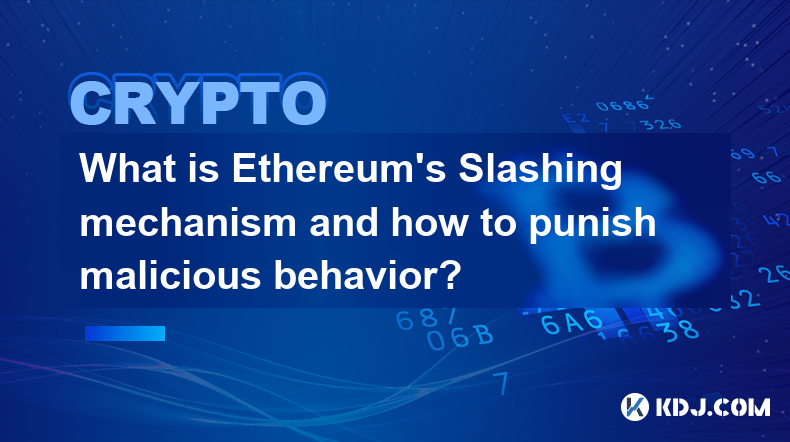-
 Bitcoin
Bitcoin $82,261.7754
0.50% -
 Ethereum
Ethereum $1,565.6796
-2.31% -
 Tether USDt
Tether USDt $0.9996
0.02% -
 XRP
XRP $2.0112
-0.14% -
 BNB
BNB $582.8995
1.00% -
 Solana
Solana $118.8424
3.46% -
 USDC
USDC $0.9999
0.00% -
 Dogecoin
Dogecoin $0.1585
1.24% -
 TRON
TRON $0.2370
-1.50% -
 Cardano
Cardano $0.6257
0.24% -
 UNUS SED LEO
UNUS SED LEO $9.4023
-0.15% -
 Chainlink
Chainlink $12.5474
0.79% -
 Avalanche
Avalanche $19.0773
4.62% -
 Toncoin
Toncoin $2.9363
-2.50% -
 Hedera
Hedera $0.1720
-0.94% -
 Stellar
Stellar $0.2350
0.16% -
 Sui
Sui $2.1930
1.06% -
 Shiba Inu
Shiba Inu $0.0...01203
0.11% -
 MANTRA
MANTRA $6.3890
-4.48% -
 Bitcoin Cash
Bitcoin Cash $303.1362
2.23% -
 Litecoin
Litecoin $76.2154
2.98% -
 Polkadot
Polkadot $3.5207
-0.34% -
 Dai
Dai $0.9997
-0.02% -
 Bitget Token
Bitget Token $4.2586
-0.91% -
 Ethena USDe
Ethena USDe $0.9986
-0.02% -
 Hyperliquid
Hyperliquid $15.0060
5.93% -
 Pi
Pi $0.6089
1.90% -
 Monero
Monero $200.7791
-1.37% -
 Uniswap
Uniswap $5.2265
0.24% -
 OKB
OKB $53.2197
-0.15%
What is the issue volume of FLOW coins? One article to introduce the application scenarios of FLOW coins
The Flow blockchain's native token, FLOW, has diverse functions, including NFT ownership, transaction fees, governance, and staking, facilitating the ecosystem's operations.
Oct 23, 2024 at 11:52 pm

Understanding FLOW Coin: Applications and Issue Volume
About FLOW Coin
FLOW is the native token of the Flow blockchain, a high-throughput, scalable platform designed specifically for NFTs and dApps. It serves various functions within the Flow ecosystem.
Applications of FLOW Coin
FLOW coins have a diverse range of applications, including:
- NFT Ownership: FLOW is used to purchase, sell, and store NFTs on Flow.
- Transaction Fees: Users pay transaction fees in FLOW when interacting with smart contracts or transferring NFTs on the Flow blockchain.
- Governance: FLOW holders can participate in governance decisions through FLOW governance votes.
- Staking: FLOW can be staked to earn rewards and support the Flow network's security.
Issue Volume of FLOW Coins
The total supply of FLOW coins is 1.34 billion, with an initial circulation of 500 million coins. The remaining coins will be released gradually over time through staking rewards and network usage.
As of January 2023, the circulating supply of FLOW coins is approximately 860 million.
Conclusion
FLOW coins play a crucial role in the Flow blockchain ecosystem, facilitating NFT ownership, transaction fees, governance, and staking. With its growing adoption and diverse applications, FLOW has emerged as a prominent cryptocurrency in the NFT and dApp space.
Disclaimer:info@kdj.com
The information provided is not trading advice. kdj.com does not assume any responsibility for any investments made based on the information provided in this article. Cryptocurrencies are highly volatile and it is highly recommended that you invest with caution after thorough research!
If you believe that the content used on this website infringes your copyright, please contact us immediately (info@kdj.com) and we will delete it promptly.
- XRP Price Jumps as the Market Sentiment Turns Risk-On
- 2025-04-11 20:20:13
- Rare CryptoPunk NFT Has Changed Hands for $6M, Sellers Absorbed a $10M Loss
- 2025-04-11 20:20:13
- Midnight Airdrop Listing Details: Launch Date, Eligibility & More to Know
- 2025-04-11 20:15:13
- Bitcoin (BTC) Price May Encounter Resistance at the $84,000 Level
- 2025-04-11 20:15:13
- What Is REAL? Conor McGregor's staking-enabled memecoin explained
- 2025-04-11 20:10:13
- Fartcoin (FART) Price Soars 20% Despite Crypto Market Downturn
- 2025-04-11 20:10:13
Related knowledge

What is Ethereum’s Slashing mechanism and how to punish malicious behavior?
Feb 20,2025 at 03:08am
Key PointsOverview of slashingDifferent types of slashing in EthereumIncentives and consequences of slashingIdentifying and reporting slashed validatorsOngoing discussions and potential improvementsEthereum's Slashing Mechanism: Punishing Malicious BehaviorEthereum's slashing mechanism is an essential tool for ensuring network security and punishing mal...

What is the verifier node of Ethereum and how to become a verifier?
Feb 19,2025 at 06:00pm
The Verifier Node of Ethereum: A Comprehensive GuideKey Points:What is a Verifier Node?How to Become a Verifier NodeResponsibilities and Rewards of a Verifier NodeMinimum Requirements for Becoming a Verifier NodePotential Difficulties in Running a Verifier Node1. What is a Verifier Node?A Verifier Node is an independent entity on the Ethereum network th...

What is Ethereum’s staking, and how to participate and earn money?
Feb 19,2025 at 04:37pm
Key Points:Understanding Ethereum's Staking MechanismSteps to Participate in StakingBenefits and Rewards of StakingSecurity and Risk ConsiderationsTechnical Requirements and Hardware OptionsPotential Challenges and Troubleshooting TipsFAQs on Ethereum StakingWhat is Ethereum's Staking?Proof-of-Stake (PoS) is a consensus mechanism used in blockchain netw...

What is Ethereum’s DAO (Decentralized Autonomous Organization) and how does it work?
Feb 20,2025 at 03:12am
Key PointsDefinition and Structure of a DAOGovernance and Decision-Making in DAOsBenefits and Use Cases of DAOsChallenges and Limitations of DAOsWhat is Ethereum's DAO (Decentralized Autonomous Organization) and How Does It Work?Definition and Structure of a DAOA Decentralized Autonomous Organization (DAO) is an innovative governance and management fram...

What is Ethereum's multi-signature wallet and how to improve security?
Feb 20,2025 at 02:18pm
Key Points:Understanding the Concept of a Multi-Signature WalletBenefits and Drawbacks of Multisig WalletsRequirements for Setting Up a Multisig WalletStep-by-Step Guide to Generating a Multisig WalletImplementing Strategies for Enhanced Security1. Understanding the Concept of a Multi-Signature WalletA multi-signature (multisig) wallet in the Ethereum e...

What is Ethereum's oracle and how to provide data for smart contracts?
Feb 21,2025 at 01:30am
Key Points:Understanding the concept of oracles in EthereumExploring different types of oraclesDetailed guide on how to provide data for smart contractsAddressing potential challenges and considerationsWhat is Ethereum's Oracle?Oracles are crucial components in the Ethereum ecosystem, enabling smart contracts to access real-world data and off-chain even...

What is Ethereum’s Slashing mechanism and how to punish malicious behavior?
Feb 20,2025 at 03:08am
Key PointsOverview of slashingDifferent types of slashing in EthereumIncentives and consequences of slashingIdentifying and reporting slashed validatorsOngoing discussions and potential improvementsEthereum's Slashing Mechanism: Punishing Malicious BehaviorEthereum's slashing mechanism is an essential tool for ensuring network security and punishing mal...

What is the verifier node of Ethereum and how to become a verifier?
Feb 19,2025 at 06:00pm
The Verifier Node of Ethereum: A Comprehensive GuideKey Points:What is a Verifier Node?How to Become a Verifier NodeResponsibilities and Rewards of a Verifier NodeMinimum Requirements for Becoming a Verifier NodePotential Difficulties in Running a Verifier Node1. What is a Verifier Node?A Verifier Node is an independent entity on the Ethereum network th...

What is Ethereum’s staking, and how to participate and earn money?
Feb 19,2025 at 04:37pm
Key Points:Understanding Ethereum's Staking MechanismSteps to Participate in StakingBenefits and Rewards of StakingSecurity and Risk ConsiderationsTechnical Requirements and Hardware OptionsPotential Challenges and Troubleshooting TipsFAQs on Ethereum StakingWhat is Ethereum's Staking?Proof-of-Stake (PoS) is a consensus mechanism used in blockchain netw...

What is Ethereum’s DAO (Decentralized Autonomous Organization) and how does it work?
Feb 20,2025 at 03:12am
Key PointsDefinition and Structure of a DAOGovernance and Decision-Making in DAOsBenefits and Use Cases of DAOsChallenges and Limitations of DAOsWhat is Ethereum's DAO (Decentralized Autonomous Organization) and How Does It Work?Definition and Structure of a DAOA Decentralized Autonomous Organization (DAO) is an innovative governance and management fram...

What is Ethereum's multi-signature wallet and how to improve security?
Feb 20,2025 at 02:18pm
Key Points:Understanding the Concept of a Multi-Signature WalletBenefits and Drawbacks of Multisig WalletsRequirements for Setting Up a Multisig WalletStep-by-Step Guide to Generating a Multisig WalletImplementing Strategies for Enhanced Security1. Understanding the Concept of a Multi-Signature WalletA multi-signature (multisig) wallet in the Ethereum e...

What is Ethereum's oracle and how to provide data for smart contracts?
Feb 21,2025 at 01:30am
Key Points:Understanding the concept of oracles in EthereumExploring different types of oraclesDetailed guide on how to provide data for smart contractsAddressing potential challenges and considerationsWhat is Ethereum's Oracle?Oracles are crucial components in the Ethereum ecosystem, enabling smart contracts to access real-world data and off-chain even...
See all articles























































































